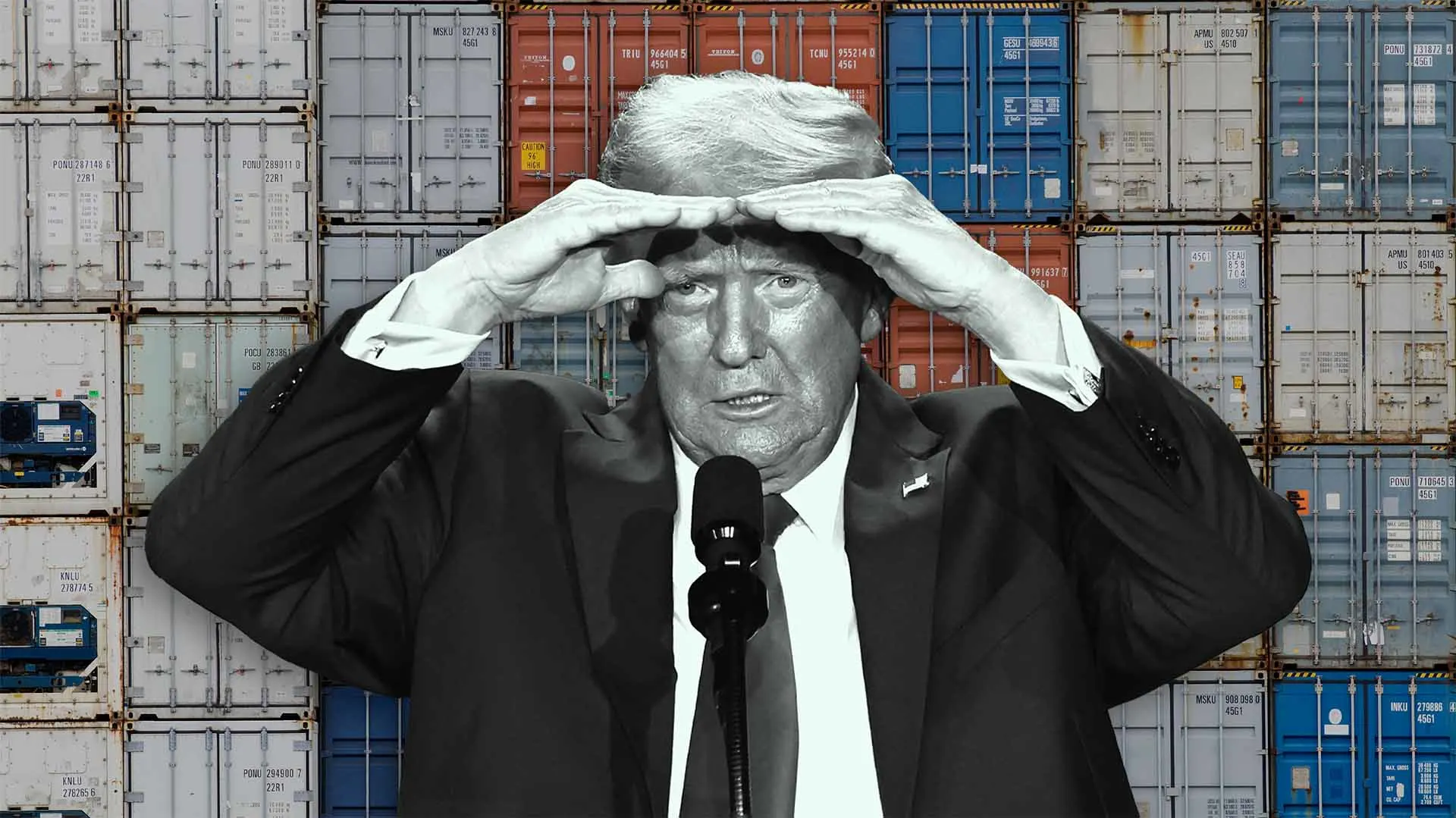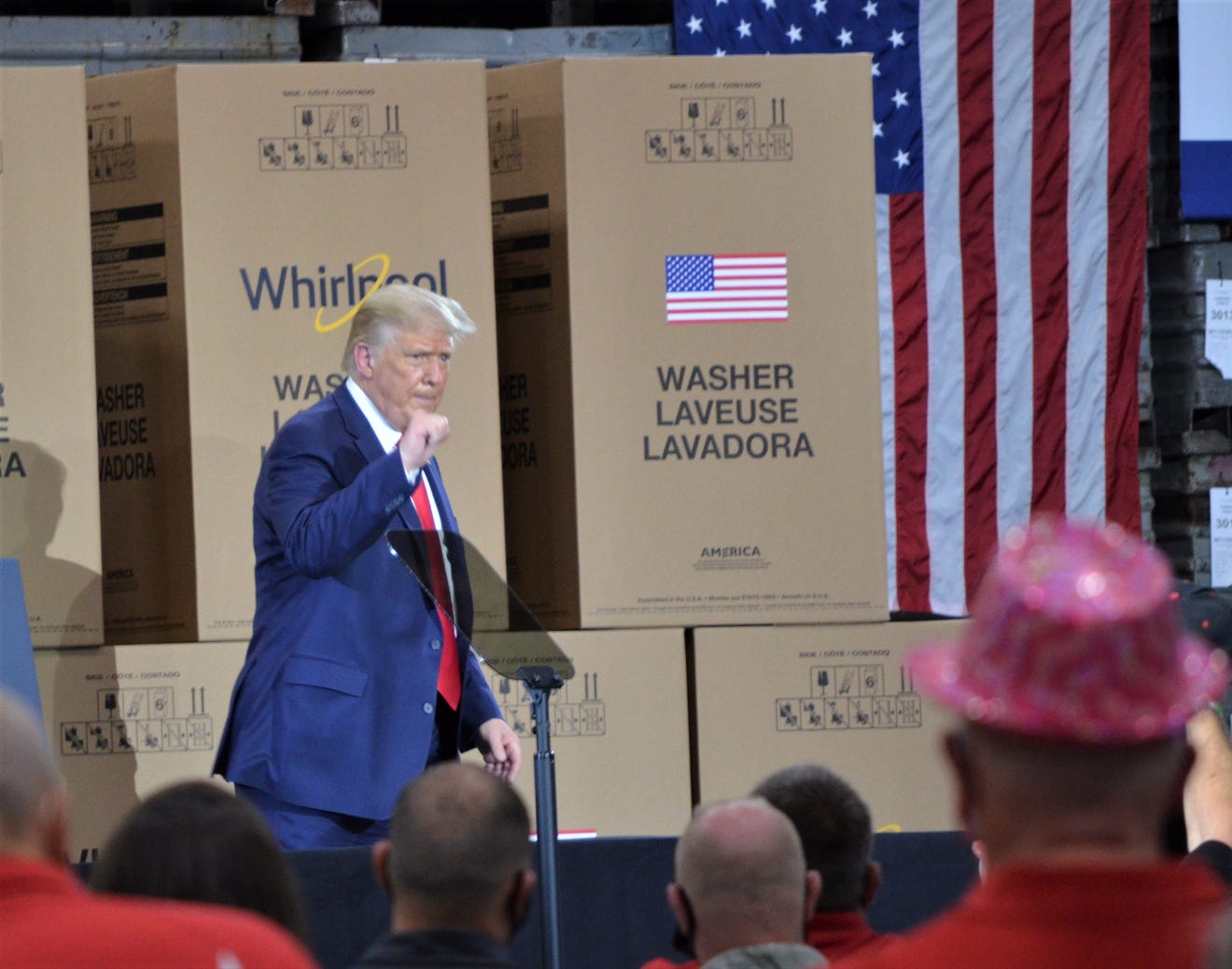Trump's 30% China Tariffs: Extended Until Late 2025?

Table of Contents
The Original Implementation of Trump's 30% China Tariffs
The imposition of Trump's 30% tariffs on Chinese goods stemmed from escalating tensions in US-China trade relations. The Trump administration cited concerns over unfair trade practices, intellectual property theft, and a massive trade deficit as justification for these tariffs, initiating a trade war that significantly impacted global markets. These Section 301 tariffs, implemented in stages starting in 2018, targeted various sectors, including:
- Technology: Semiconductors, telecommunications equipment, and other high-tech goods.
- Manufacturing: Steel, aluminum, and various manufactured products.
- Consumer Goods: A wide range of consumer products, from toys to apparel.
The tariffs initially affected hundreds of billions of dollars worth of Chinese imports, dramatically altering the landscape of China trade relations and leading to significant US-China trade tensions. These measures were implemented under the guise of protecting American industries and jobs.
Arguments for and Against Extending Trump's 30% China Tariffs
The debate surrounding the potential extension of these tariffs until late 2025 is fiercely contested. Proponents and opponents present compelling, albeit opposing, arguments.
Proponents' Arguments:
- National Security: Supporters argue that maintaining these tariffs is crucial for national security, protecting vital American industries from unfair competition and bolstering domestic manufacturing.
- Leverage in Trade Negotiations: The tariffs are viewed as a powerful tool to pressure China into making concessions on trade practices and intellectual property rights during future negotiations.
- Protecting Domestic Industries: Proponents believe that the tariffs shield American businesses and workers from what they perceive as predatory pricing and unfair trade practices. This protectionist stance prioritizes domestic economic interests.
Opponents' Arguments:
- Inflation and Higher Consumer Prices: Critics argue that the tariffs lead to higher prices for consumers, contributing to inflation and reducing purchasing power.
- Global Supply Chain Disruption: The tariffs disrupt established global supply chains, increasing costs for businesses and potentially harming economic growth.
- Harm to Free Trade: Opponents view the tariffs as a detrimental blow to free trade principles, fostering protectionism and potentially triggering retaliatory measures from China. They advocate for a more collaborative and less confrontational approach to trade disputes.
Economic Impact and Analysis of Trump's 30% China Tariffs (Past & Potential Future)
The economic impact of Trump's 30% China tariffs has been a subject of intense debate. While some studies suggest that the tariffs had a minimal impact on overall GDP growth, others point to increased costs for businesses and consumers, contributing to inflation. A potential extension until 2025 could exacerbate these effects:
- Increased Inflation: Further extension could worsen existing inflationary pressures, impacting consumer spending and economic growth.
- Reduced Trade: The tariffs may continue to discourage trade between the US and China, impacting the overall economic health of both nations.
- Shifting Supply Chains: Businesses may continue to shift production away from China, impacting global supply chains and potentially leading to higher costs and production delays. An economic impact assessment of this magnitude would be extensive.
(Insert relevant charts and graphs here illustrating past and projected economic impacts.)
Political Implications and Future of US-China Trade Relations
The decision to extend or lift the tariffs carries significant political implications. The move could further strain US-China relations, potentially impacting broader geopolitical dynamics. The possibility of future trade agreements and bilateral relations will hinge greatly on this decision.
- Escalation of Tensions: Extending the tariffs could lead to retaliatory measures from China, further escalating trade tensions.
- Impact on Global Order: The decision will send a significant signal about the future direction of US trade policy and its commitment to multilateralism versus bilateralism.
- Future Trade Negotiations: The outcome will significantly influence future negotiations regarding trade and other aspects of the US-China relationship. The future of US-China trade relations rests precariously on the outcome.
Conclusion: The Future of Trump's 30% China Tariffs – What Lies Ahead?
The future of Trump's 30% China tariffs remains uncertain. While proponents highlight national security and leverage in trade negotiations, opponents point to the negative economic and political consequences, including inflation, supply chain disruptions, and strained US-China relations. The potential extension until late 2025 presents a critical juncture in the ongoing trade war, with significant ramifications for the global economy. The interplay of economic and political factors will ultimately determine the trajectory of US-China relations in the coming years. Staying informed about developments concerning Trump's 30% China tariffs and their lasting impact is crucial. Continue to research reputable sources and engage in informed discussions to fully understand the complexities of this pivotal trade issue.

Featured Posts
-
 Trumps Middle East Engagement Winners And Losers
May 18, 2025
Trumps Middle East Engagement Winners And Losers
May 18, 2025 -
 Eurovision 2025 Uk Entry Announced Amidst Controversys Shadow
May 18, 2025
Eurovision 2025 Uk Entry Announced Amidst Controversys Shadow
May 18, 2025 -
 6 4 Win For Dodgers Confortos Home Run Seals The Deal
May 18, 2025
6 4 Win For Dodgers Confortos Home Run Seals The Deal
May 18, 2025 -
 Eurovisions Controversial History And The Uks 2025 Bid
May 18, 2025
Eurovisions Controversial History And The Uks 2025 Bid
May 18, 2025 -
 Cassie Responds To Diddy Assault Video Claims With Positive News
May 18, 2025
Cassie Responds To Diddy Assault Video Claims With Positive News
May 18, 2025
Latest Posts
-
 Southwest Washingtons Economic Outlook Navigating The Tariff Challenge
May 18, 2025
Southwest Washingtons Economic Outlook Navigating The Tariff Challenge
May 18, 2025 -
 Southwest Washington Preparing For The Impact Of Tariffs
May 18, 2025
Southwest Washington Preparing For The Impact Of Tariffs
May 18, 2025 -
 Economic Development Commission Secures 800 K For Florida Space Coast
May 18, 2025
Economic Development Commission Secures 800 K For Florida Space Coast
May 18, 2025 -
 Florida Space Coast Edc Receives Major Funding Boost 800 K Grant
May 18, 2025
Florida Space Coast Edc Receives Major Funding Boost 800 K Grant
May 18, 2025 -
 800 000 Grant Awarded To Florida Space Coast Economic Development Commission
May 18, 2025
800 000 Grant Awarded To Florida Space Coast Economic Development Commission
May 18, 2025
